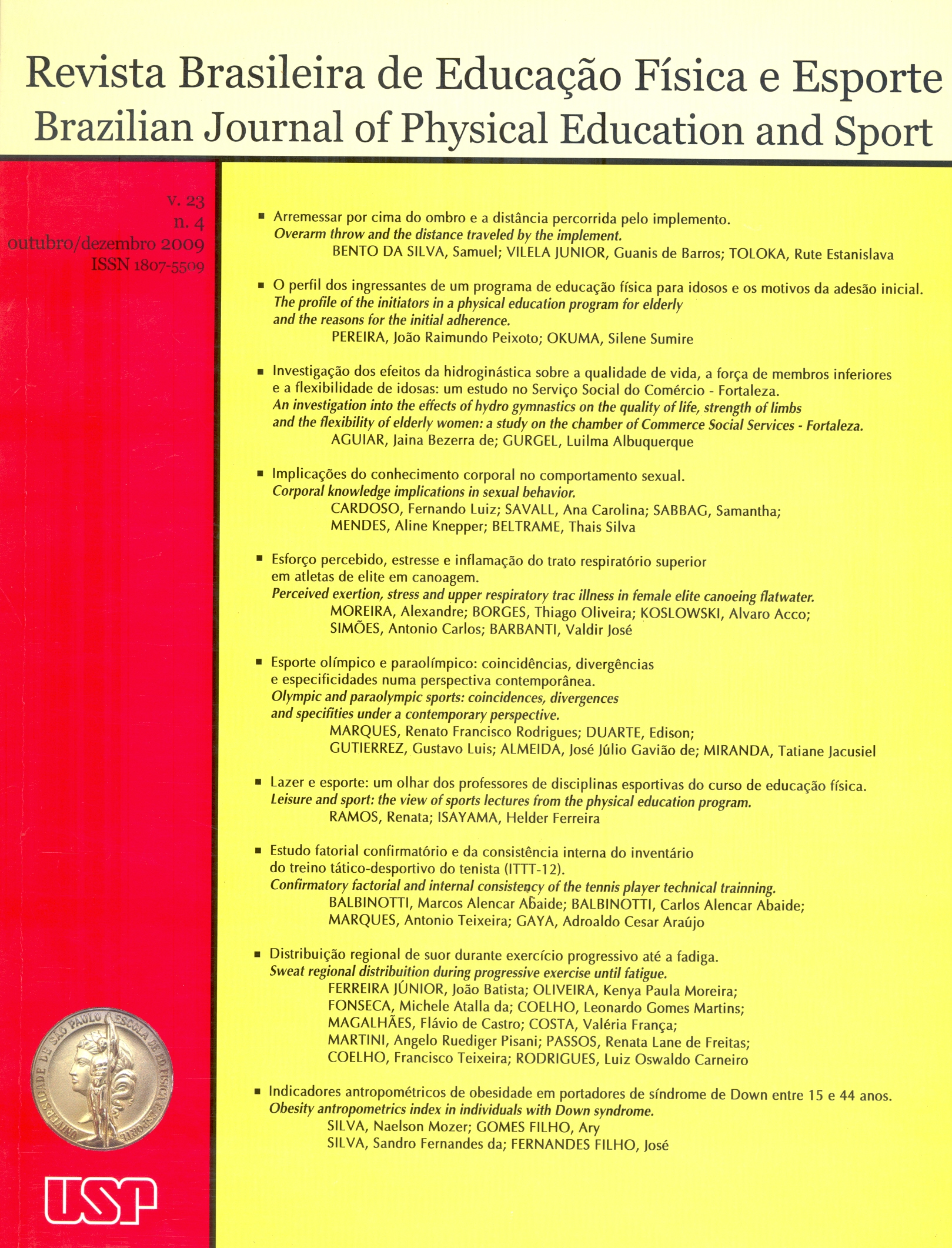Overarm throw and the distance traveled by the implement
DOI:
https://doi.org/10.1590/S1807-55092009000400001Keywords:
Motor development, Overarm throwing, Distance, Physical educationAbstract
Overarm throwing skill has been widely studied regarding the farthest throwing distance analysing the velocity of the implement; however the object's distance has not been investigated. The aim of this study was to verify if there is a relationship between the skill development and the distance reached by the object and to observe differences between genders. Fifty children, ages 7-8 years, both genders, from Piracicaba - SP, were analyzed while throwing a tennis ball as far as they could. Each child had three attempts. They were filmed with two mini DV cameras, from both side and rear views while performing. Children's movements were categorized using a developmental sequence and the distance covered by the ball was register. A positive correlation was found between the developmental level and the ball distance. Gender differences were observed; boys were in a more advanced levels in all actions and had farther throwing distances. So, developmental level of this skill was important to reach the task goal (throwing as far as possible). It is suggested that skill level is influenced by the environment and movement opportunities must be provided in order to help the children's global development.Downloads
Download data is not yet available.
Downloads
Published
2009-12-01
Issue
Section
naodefinida
License
Todo o conteúdo da revista, exceto onde está identificado, está licenciado sob uma Licença Creative Commons (CC-BY)
How to Cite
Silva, S. B. da, Vilela Junior, G. de B., & Toloka, R. E. (2009). Overarm throw and the distance traveled by the implement . Brazilian Journal of Physical Education and Sport, 23(4), 309-318. https://doi.org/10.1590/S1807-55092009000400001


